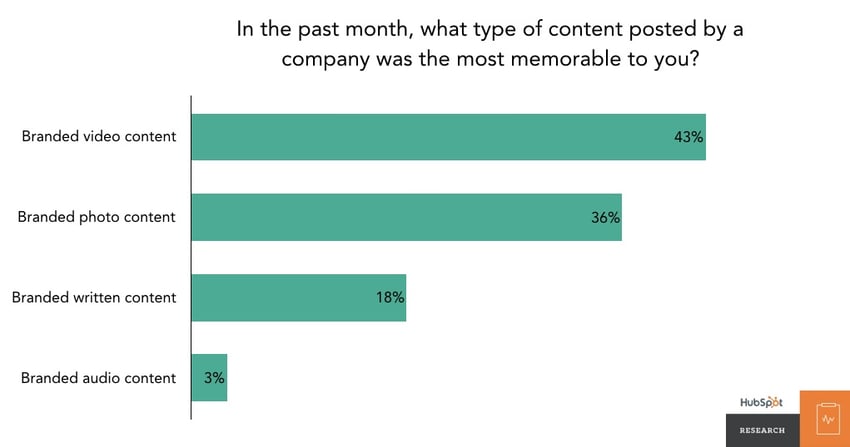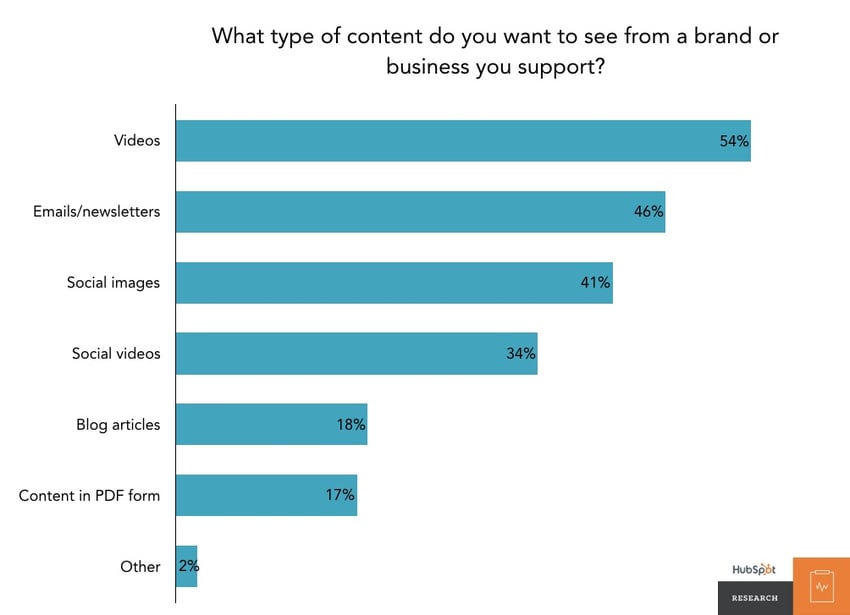Video is emerging as a key digital marketing trend for B2B marketers, opening up powerful new ways to connect with prospects and customers. The B2B marketers who use it report that video is more successful at converting customers than any other technique.
Consider these video marketing statistics:
-
By 2019, global consumer Internet video traffic will account for 80% of all consumer Internet traffic (Source: SmallBizTrends)
-
55% of people watch videos online every day (Source: Digital Information World)
-
90% of users say that product videos are helpful in the decision process (Source: Hubspot)
-
1 minute of video is equal to 1.8 million words, says research company Forrester
-
Top three most effective types of video content: Customer testimonials (51%); Tutorial videos (50%); Demonstration videos (49%) (Source: Curata)
-
it’s estimated that 50% of companies are already using video in their marketing programs
-
Video posts on Facebook have 135% greater organic reach than photo posts (Source: Social Media Today)
-
Including a video on a landing page can increase conversion rates by 80% (Source: Unbounce)
-
After watching a video, 64% of users are more likely to buy a product online (Source: Hubspot)
-
People spend 3 times longer watching a live social video compared to one that has been prerecorded (Source: Social Media Today)
-
Video in an email leads to 200-300% increase in click-through rates (Source: Hubspot)

Dominance of video in Social Media
- YouTube: More than 5 billion video views are watched each day
- Facebook: Around 500 million people watch Facebook videos every day
- Twitter: 82% of Twitter's audience watches video content
- Snapchat: says they generate 10 billion video views every single day
It’s easy to see the potential of YouTube marketing for consumer products, for example, but many B2B marketers have questions: Do I need video marketing? Which types of companies need video marketing? Will it add value to my marketing programs? The answer is a definite yes – video offers a huge opportunity for businesses that sell to other businesses. Video doesn’t always need to be sexy and appealing, A short video that is informative can be of great value.’
Every marketing campaign should have at least one video. Maarten Van Erdeghem - online marketing specialist at Living Stone - shares the example of a real estate company looking for investors to buy a large piece of land. He created a video using drone footage, and added overlays with additional information that answered all questions a potential investor would have. Then he promoted the video on Facebook, Instagram and Google. Potential investors could immediately see the complete overview of the project. ‘The video made the difference between other comparable projects’.
Many healthcare and technology organizations already own a high-quality set of videos, created for training or other purposes, or they hold events which can easily be recorded. These videos can be used as part of a larger marketing program, or can even be featured in a campaign on their own.
The key is knowing where to look, and being able to spot the potential in a training video, or an educational event. A lot of B2B marketers underestimate their own assets.


Using Facebook Live
Facebook updates its algorithms often, but major changes tend to both reflect and shape the way we create and consume content. Its latest update to the algorithm favors video, especially Live videos, over other content. So if you’re working hard to reach your follower segments on Facebook, video will make it a little easier.
It’s hard to beat the value of creating things that your audience wants more of. Social video already generates 1,200% more shares than posts with images or text, and people clearly enjoy interacting with video content. Live video takes that engagement up a notch, so it’s becoming popular with brands and consumers alike. People spend three times as long watching Live videos as they do regular ones.




.png?width=1080&name=Rebranding%20LS-3-Profile%20pic%20(1).png)